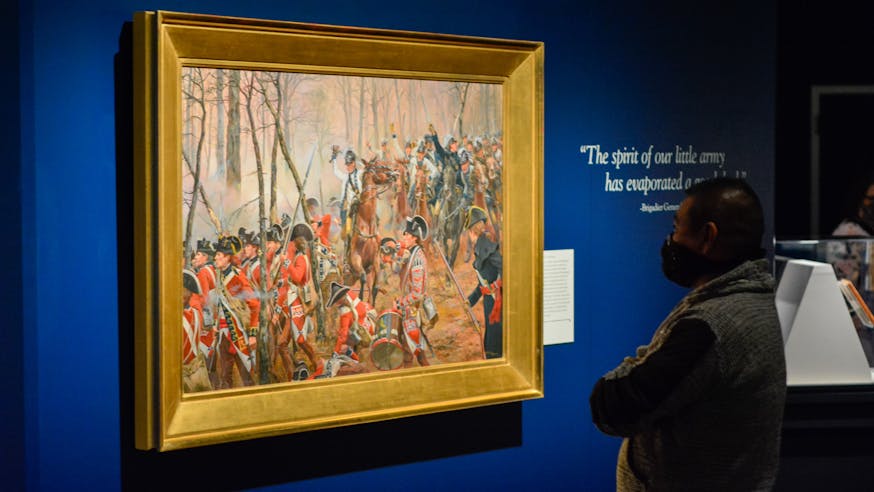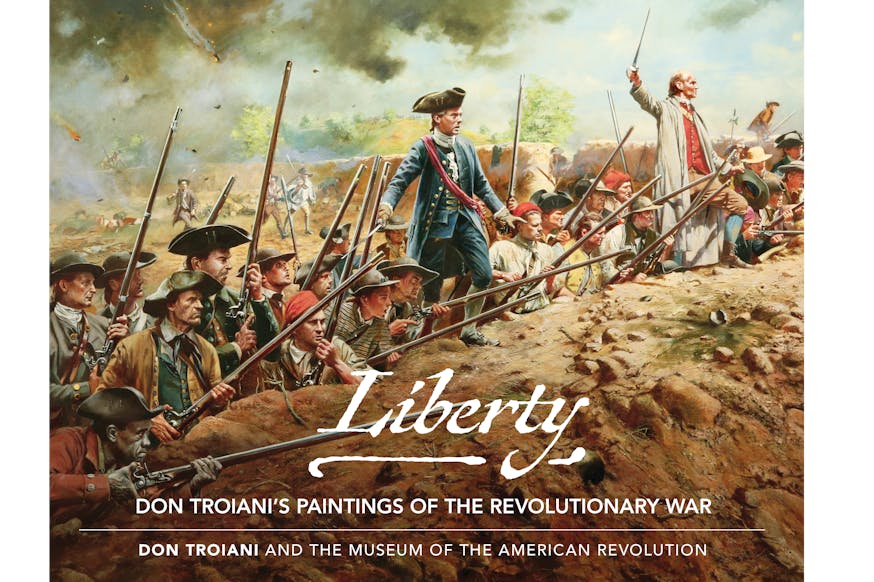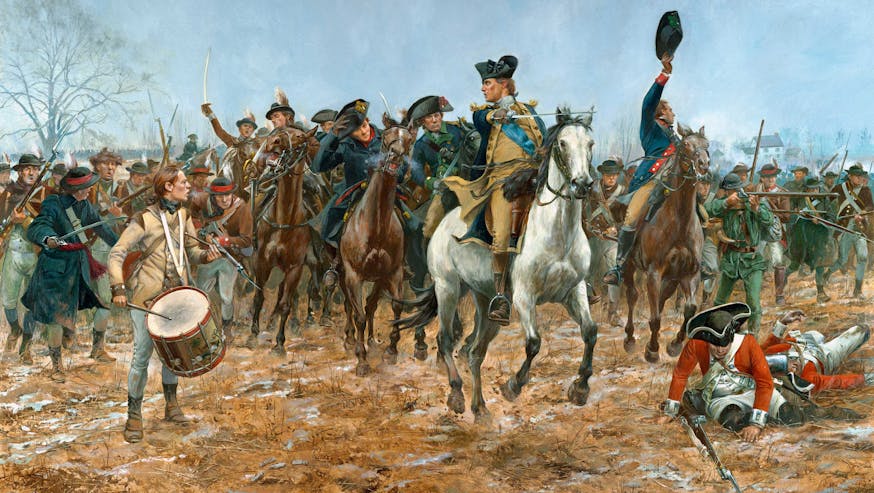
Liberty Exhibit
Breaking Down Don Troiani's "Victory or Death, Advance on Trenton" Painting
December 2021After a daring Christmas night crossing of the Delaware River north of Trenton, New Jersey, General George Washington’s army marched through snow, sleet, and wind. The Hessian garrison at Trenton was their target on the morning of Dec. 26. Washington ordered the verbal sign and countersign for his army during the secret operation to be “victory or death.”
The "Victory or Death, Advance on Trenton" painting, painted by nationally renowned historical artist Don Troiani and was on display in our Liberty: Don Troiani's Paintings of the Revolutionary War special exhibition, captures the moment the Continental Army reached the outskirts of the town.

At far right, under their red banner, Virginia troops break into a run, closely followed by General Washington, his silver-hilted sword in hand. In the far-left foreground rides Captain Alexander Hamilton, directly following his New York artillery company, its two bronze six-pound guns still tightly closed against the storm. Minutes later, under fire but atop high ground, Hamilton’s guns blazed, shooting cannonballs and grapeshot down Trenton’s King Street.
1. Captain Alexander Hamilton
Only 19 years old, Captain Alexander Hamilton crossed the Delaware River and rode into Trenton with Washington’s army. He led a company of about 30 New York artillerymen into battle on the morning of Dec. 26.
2. Hamilton’s Artillery
The two bronze six-pound cannons that Captain Hamilton commanded were among the 18 pieces of artillery that the Revolutionaries deployed against the Hessians at Trenton. The overwhelming fire of the artillery prevented the Hessians from mounting attacks, which helped to turn the tide of the battle in favor of the Americans.
3. Foul Weather
A nor’easter snowstorm almost ruined General Washington’s plan to attack the Hessians at Trenton. The army marched slowly through icy mud and snow while a sharp, cold wind cut through their clothing. The air temperature hovered around 32 degrees. At an average pace of barely over two miles per hour, the 10-mile march took about four hours to complete.
After a while it rained, hailed, snowed, and froze, and at the same time blew a perfect hurricane.Fifer John Greenwood, Continental Army
4. General George Washington
General Washington led the Continental Army in a two-pronged attack at Trenton. He accompanied the division that attacked the town from the north. Washington praised his troops for their “great firmness, perseverance & bravery” during the difficult march.
5. Flag
The red flag that Don Troiani painted into the scene is based on the original flag of the 8th Virginia Regiment, shown below and on display in the exhibit. Five regiments of Virginia troops (not including the 8th), totaling about 900 soldiers, marched to Trenton.

The silk flag above, on loan from Brian and Barbara Hendelson, formerly shimmered orange and gold in the sunlight when it was carried by the 8th Virginia Regiment during the middle years of the Revolutionary War. The remnants of the painted banner at the center of the flag include the regiment's number expressed as a Roman numeral: VIII. The 8th Virginia initially served in South Carolina in 1776 while other Virginia regiments campaigned with Washington’s main army in New York, New Jersey, and Pennsylvania.
6. Trenton
Washington’s army began its attack at 8 a.m., after sunrise. Hessian sentries surrounding the town, which contained about 100 houses and a stone barracks for soldiers, fired upon the American troops as they charged forward through the snow and sleet. The three Hessian regiments tried to form up in the town’s streets, but the Continental Army forced the Hessians to retreat into a field where most of them surrendered.
Learn More

Liberty: Don Troiani’s Paintings of the Revolutionary War
October 16, 2021 - September 5, 2022
Liberty
